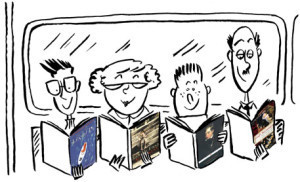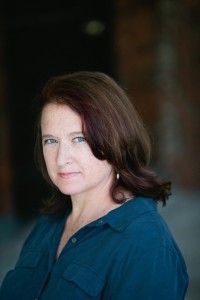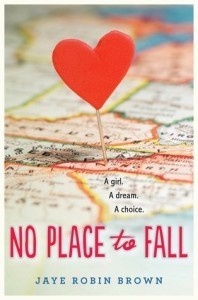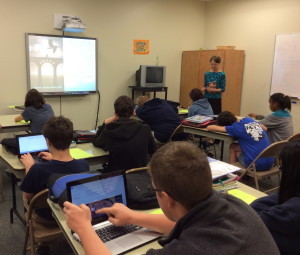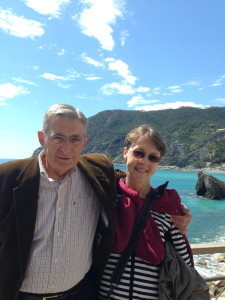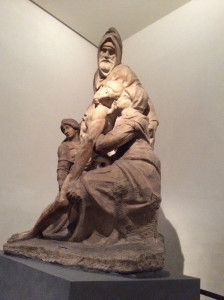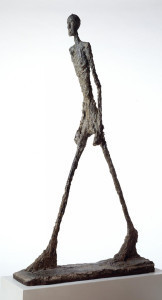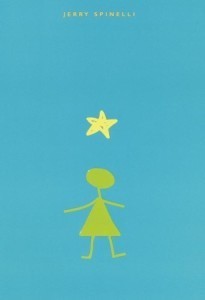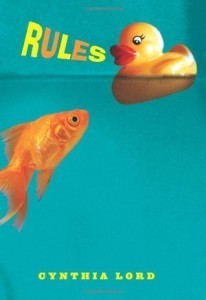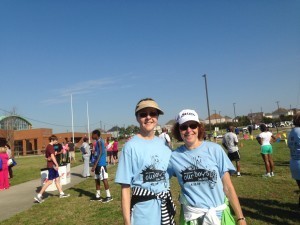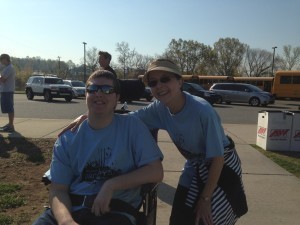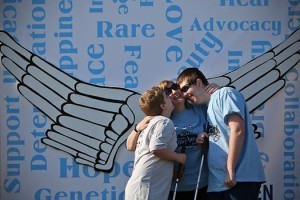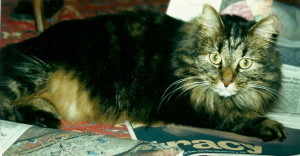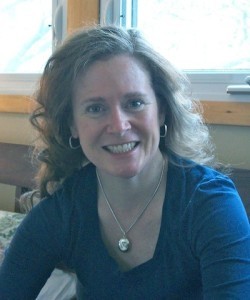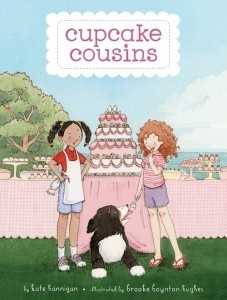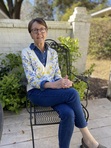Linda Vigen Phillips's Blog, page 7
June 9, 2014
YA FICTION: Are You Adult Enough to Read It?
Congratulations to Debbie Causevic, winner of the drawing for a signed copy of Jaye Robin Brown’s ARC, No Place to Fall. Thanks to all who participated in this drawing.
My ARC (CRAZY) has been out less than a month, and I’m already bracing myself for the reviews. In the meantime, I’ve begun to “take the show on the road” and while they may not be official reviews, there are some comments beginning to dribble in. For example, my son’s enthusiastic responses (I’m sorry, family members do count, you know!) convinced me he genuinely enjoyed reading it (surprised both of us, I think!) and for purposes of this discussion, he is well past his teen years.
Speaking of purposes, it is not mine to get all braggy about the positive feedback I’m getting, although I will share a couple of lovely comments that have touched my heart later. What has me riled today is an article from the Slate Book Review by Ruth Graham, entitled “Against YA” obviously inspired by the release of the movie version of John Green’s YA book, The Fault in Our Stars.
Graham concedes that she’s a bit bashful about expressing her self-described “fuddy-duddy” opinion that “adults should feel embarrassed about reading literature written for children.” She’s, uh, bashful because recent market research shows that 55% of YA books are bought by people over 18, and that the cultural definition of “young adult” now seems to hover just under 30.
Graham’s reasoning leads her to the conclusion that “transparently trashy stuff like Divergent and Twilight” can be discounted because they don’t qualify as serious literature. Whether you agree with that is a discussion for another day. But to follow Graham’s line of thinking, books like The Fault in Our Stars, i.e., realistic fiction that stands on the strength of both story line and quality of writing, pose the threat of replacing real literary fiction in adult readers. And, says Graham, “that’s a shame.”
Just exactly why we erudite adults shouldn’t allow ourselves to weep over, or unabashedly enjoy, good YA literary fiction wasn’t clear. Graham explained that in her own YA days (defined by her as early 1990’s) books like The Westing Game and Tuck Everlasting provided “some of the most intense reading experiences of my life.” But she doesn’t care to go back. And certainly not forward to the likes of Eleanor and Park, The Perks of Being a Wallflower, It’s Kind of a Funny Story, to name just a few, I’m sure.
I’ll leave it there. Everyone is entitled to his or her own choice in reading. But to be perfectly honest, I am shamelessly un-embarrassed to tell you that I would die to be on Graham’s list! And just to wrap up where I started with this, to date, the only people who have read and commented on my forthcoming YA book are adults and I’m not going to apologize for passing along a couple of their unsolicited comments:
“But most of all the gorgeous and powerful language and verse structure moved me…..when I could tear myself away long enough to make notes I mostly said, ‘wow’.” (Louise Galveston, author of By the Grace of Todd, Penguin/Razorbill, Feb. 2014)
“It is beautifully written and heart-gutting. The characters are all so real and the descriptions so rich and tangible. I know this book will be a hit with readers of all ages.” (Skila Brown, author of Caminar , Candlewick Press, March, 2014.)
Really, I did not intend to toot my own horn, but just thought it interesting, and yes, humbly gratifying, that at least three adults out there (I know this will never stand up in a statistics class!) seemed to enjoy reading my YA book. Readers of all ages, I hope you’ve reached the conclusion that good writing is good writing, no matter the age group for which it is intended. I hope you will continue to choose books based on what your heart tells you, rather than that nebulous world of “shoulds” where no one usually wins, and everyone generally loses.
If you would like to pursue this discussion further (why read YA), check out Gwenda Bond’s recent blog. In the meantime, I would love to get some feedback on the whole topic from readers and writers!
**********************
REMINDER: Click here and scroll down to find the Goodreads giveaway button for two copies of CRAZY which runs from midnight June 10 to midnight June 17!
June 2, 2014
Featuring NO PLACE TO FALL and a giveaway!
It’s been too long since I featured a fellow debut author, so I am excited to welcome Jaye Robin Brown today, to talk about her upcoming book, No Place To Fall, being released by Harper Teen on December 9, 2014. LEAVE A COMMENT TO ENTER A DRAWING TO WIN AN ARC OF HER BOOK. YOUR NAME WILL BE ENTERED TWICE IF YOU JOIN THIS BLOG OR SHARE ON THE SOCIAL MEDIA OF YOUR CHOICE. WINNER WILL BE ANNOUNCED JUNE 9. Here is Jaye’s Goodreads synopsis:
Amber Vaughn is a good girl. She sings solos at church, babysits her nephew after school, and spends every Friday night hanging out at her best friend Devon’s house. It’s only when Amber goes exploring in the woods near her home, singing camp songs with the hikers she meets on the Appalachian Trail, that she feels free—and when the bigger world feels just a little bit more in reach.
When Amber learns about an audition at the North Carolina School of the Arts, she decides that her dream—to sing on bigger stages—could also be her ticket to a new life. Devon’s older (and unavailable) brother, Will, helps Amber prepare for her one chance to try out for the hypercompetitive arts school. But the more time Will and Amber spend together, the more complicated their relationship becomes . . . and Amber starts to wonder if she’s such a good girl, after all.
Then, in an afternoon, the bottom drops out of her family’s world—and Amber is faced with an impossible choice between her promise as an artist and the people she loves. Amber always thought she knew what a good girl would do. But between “right” and “wrong,” there’s a whole world of possibilities.
Welcome, Jaye, and thank you for giving us your who, what, where, when, why responses:
Who: is your protagonist?
My protagonist is Amber Vaughn. She’s a small town mountain girl who loves singing but not in front of crowds. Which is a problem when you hope to make it your career. She loves her family but she also realizes they’re seriously messed up. Her daddy’s cheating on her mama, her brother-in-law’s selling drugs from the backyard, and her sister’s given up on her dream of being a vet tech. It’s only when Amber’s out on the trails, high up on a ridge top, that she feels free, like she can see beyond her holler and find a way out.
What: do you love writing about?
I love writing about families, social inequity, and the underdog. To me the perfect YA moment is when you realize you are not your parents. I love the struggle to find a way to be yourself while hanging on to family identity or how to still love people when you know you don’t want to be like them. Also kissing. Kissing is good.
Where: is your book set?
No Place to Fall is set in the fictional town of Sevenmile, North Carolina, but it’s somewhere north of Asheville near the Appalachian Trail. It might remind some of my students of the tiny town of Bakersville, but it’s not. Of course, all of the elements are decidedly western North Carolinian.
When: did you get your book inspiration?
This book was the result of a couple of events colliding. I heard a story about a super wild party in an abandoned cabin. Then I heard a story about a student’s family member who overdosed on prescription drugs. Combine that with the movie and the music from Songcatcher, and Amber Vaughn’s voice ringing in my head one morning on my drive into school and voila, the genesis of No Place To Fall was born. The book was actually much darker in earlier drafts, but as I revised, Amber’s love of music shone through and the story became more about her dream, her relationships with her friends, and less about the problems of her family members.
Why: did you decide to write about your book topic?
I love where I live. I’m not a native, but I’ve grown to admire the deep family ties, the reliance on faith when times are hard, and the brilliance of the landscape. Western North Carolina is this wild mix of super wealthy vacation home folks, back-to-the-land homesteaders, artists, and multi-generation Appalachian families. It’s the latter I wrote this book for. Though I think it’s changing, for a while it seemed so much of young adult literature featured protagonists for middle class or upper class families. Amber’s the first in her family to consider college, she doesn’t have a car, she has no smart phone, but she still has dreams like every other teenager on the planet. I wanted to spotlight a girl who could easily be one of my students. I wanted to show her beauty and her flaws and the depth of the love that ties her to her family and her family to her, even in times of struggle.
THANKS FOR JOINING US TODAY, JAYE! I can’t wait to read a fellow-Carolinian’s book set in the gorgeous western part of our state!
@jayerobinbrown on Twitter and Instagram
On Goodreads: https://www.goodreads.com/book/show/16144570-no-place-to-fall
May 26, 2014
FIRST SCHOOL VISIT
Last week I had the distinct pleasure of giving my first school presentation at the John Crosland School, where some of my former students are now in upper school. It was fun to see how those students have grown, both physically and academically, and to remember that I was working on Crazy in my “spare” time while teaching there.
The John Crosland School serves students with specific attention and learning differences, and quite honestly, I wasn’t sure what to expect in response to a book written in verse about a teenage girl in the 1960′s struggling with her mother’s mental illness. But it didn’t take long into my presentation to remember how compassionate, empathetic, and understanding these students can be. It makes sense. Each of them is dealing with at least one, if not more than one, issue or situation that has added extra challenges to their learning process. These are young adults who are learning how to compensate and cope with what life has handed them. What better group to grasp a novel that depicts a teenager coping with somewhat overwhelming challenges in her life?
I began with a reading of the first poem and invited their feedback. They opened up immediately, sharing examples of the grief and/or issues that some have encountered. During my teaching days there, I was constantly in awe of how detail-oriented students with certain learning differences can be, and this day was no exception. Their responses indicated a firm grasp of major historical events during the sixties, as well as a reasonable understanding of how a mental illness can upset the equilibrium in a family.
I went on using a power point to explore the meaning of “free verse,” the format of Crazy. Again, during my teaching career, this population invariably did well reading and writing any kind of verse, many times in spite of their “yuck!” opinion of poetry. They often surprised themselves (and me) with wonderfully creative and free-flowing examples of verse written straight from the heart.
I wasn’t sure if we would have time for a mini-writing exercise, but because of their spot-on attentiveness, we did. I used a handout of a revised version of the exercise mentioned in my workshop Writing From the Heart Through Verse. (condensed here) We spent a few moments as a whole group brainstorming how you might go through the process with a pesky relative (cousin, brother, sister, parent) in mind.
NOW IT’S YOUR TURN
Think of three things (good or bad) in your life that cause you to react emotionally
 (a pesky sibling, a big disappointment, an argument or issue with a parent, a childhood memory, your worst fear or your best triumph in life…….)
(a pesky sibling, a big disappointment, an argument or issue with a parent, a childhood memory, your worst fear or your best triumph in life…….)Choose the one that pumps you up or brings you down the most.
List a number of the most emotive (arousing intense feelings) words you can think of when you think of your topic.
Write three or more sentences of description in paragraph form, describing the situation as objectively as possible without injecting feelings (just the facts, ma’am.)
Write some words or sentences about how this makes you feel. Pour it on thick!
Now try to put it into free verse form. As you write, you will probably come up with new thoughts and ideas. Don’t feel like you have to stick to your original words. Think about how you want to arrange the words and lines on the page.
As I walked around the room I nervously saw the clock ticking but I also saw some students writing fast and furiously. One happened to be a former student named Scott, who was willing to share the following poem that is unedited here:
My cousins ignore me….
Ignore
Ignorance is more like it.
They tease me like I am worthless.
Worthless
They are not worth my time.
They are together constantly.
Together
They are like a pack of hyenas always looking for scraps and a good laugh.
It make me upset.
Upset
I wish I was not upset . I miss them
Them
My cousins
Once again, I am blown away at how poetry WORKS for anyone who is willing to open up, become vulnerable, dig deep and let go! Thanks John Crosland students, for letting me share my story and most of all, for being willing to share your time and talents with me. I’ll look for you at the book launch at Park Road Books Nov. 8, 2014!
****************
Hey READERS, I would love to hear from you.
Is your MIND FULL of old thoughts or new?
May 19, 2014
A LITTLE BIT OF ITALY
On the Italian Riviera
My husband and I just returned from three weeks in Italy, and while jet lag has disappeared, my night dreams and daydreams continue to be dominated by the magnificent art and architecture I have been exposed to. I don’t usually do travelogues here, but I can’t resist sharing some of the richness of this experience.
The protagonist in Crazy aspires to be an artist, and in the book she is heavily influenced by modern and impressionist artists such as Van Gogh, Hopper, Picasso, and Monet. Obviously these made it into my book because they are personal favorites of mine. And now, having basked in the richness of the Renaissance greats such as Michelangelo, Raphael, Bernini, Fra Angelico and Brunelleschi, I have a whole new list of favorites.
Michelangelo’s second Pieta, completed fifty years after the first
In fact, we had a fortuitous opportunity on two occasions to witness the old and new juxtaposed to each other, and it was unexpectedly powerful. The first was in Rome at the Villa Borghese Gallery where forty of Swiss sculptor Alberto Giacometti’s spindly skeletal forms
Giacometti’s “Walking Man”
are scattered around such classics as Bernini’s “David.” The contrast is nothing less than dramatic, and for me, unsettling. I know Giacometti excels at showing the fragility of man, but I didn’t want to be reminded of that when I stood before Bernini’s work that so exquisitely depicted and celebrated the human form, down to rippling muscles, bulging veins and fingers that appear to leave impressions on soft skin.
Bernini’s “David”
The same thing occurred at one of the great museums in Florence, the Palazzo Vecchio. Sixteen works by Jackson Pollock, the American abstract expressionist, were tucked into a room surrounded on all sides by Michelangelo and fifteenth and sixteenth century frescoes by many of his lesser-known peers. The exhibit, titled “The Shape of the Fury” literally stopped me dead in my tracks and gave me goose bumps for all the wrong reasons. No offense, Jackson, but your garish red drip painting felt like it had been hurled in my face, and my husband and I couldn’t move on fast enough.
Jackson Pollock, title unknown
This was my first trip to Italy, and the first time I’ve experienced so much Renaissance art and architecture in such big doses and so up close and personal. With all due respect to Pollock, Giacometti, and their modern peers, I left feeling sad and haunted that NOTHING that even comes close to the genius of Michelangelo exists today. That’s my opinion, of course, and I’m certainly not a seasoned art critic so please chime in, art experts!
As far as architecture is concerned, we got to climb all 463 steps to the top of the dome of Cathedral Santa Maria dei Fiore (the Duomo) and marvel for myself at how this fifteenth century massive, Florence cathedral dome was constructed. We know Filippo Brunelleschi was the mastermind architect and to this day, architects marvel at how the double-shell, herringbone brickwork was erected and how it has stayed intact over the centuries. It is thought that Brunelleschi used a flower pattern, but since he worked largely alone and secretly, the details went to the grave with him.
Brunelleschi’s Duomo in Florence
I could go on and on. Suffice it to say I am in love with Italy and all that it has to offer, and I didn’t even get to tell you about the four-day Tuscany wine tour! That’s a story for another day.
The frescoes in our room at Hotel Morandi Alla Crocetta, formerly the chapel of a fifteenth century convent in Florence. What a find!
May 12, 2014
RADICAL INDIVIDUALISM
I love to think about, read about, write about all types of people, especially those who are different. I guess that’s why I wrote my debut book, CRAZY (I know, I know, why don’t I shut up about it already, right?). Last week I talked about Cynthia Lord’s character, Catherine, who was actually, in my way of thinking, the “different one” in the book, RULES. She was exceptionally compassionate towards both a disabled brother and a friend with a disability. She had wisdom beyond her years.
A long while back I reviewed a favorite book featuring one of the most radical nonconformists in young adult fiction, Stargirl, by Jerry Spinelli. (I’m repeating it here because I recently reread it, still love it, and happen to be traveling out of the country at this moment!) Her real name was Susan Caroway, but one of the many names she created for herself was Stargirl, because “I didn’t feel like Susan anymore.” She arrived at unspectacular Mica High with an array of long hippie-like skirts, accompanied by her pet rat and a ukulele for singing happy birthday without an invitation to anyone and everyone.
Put off at first, the students began to warm up to her random acts of kindness and her infectious enthusiasm. Largely due to her cheer-leading charisma, bottom-ranked Mica High was headed for the basketball championship for the first time in years when things fell apart. Stargirl not only cheered for both teams at games (“I root for everybody”), but when a star opponent became injured, she rushed onto the court to help him. Overnight the entire student body turned against her. They shunned her. There was no turning back, even when Stargirl made a brief and painful attempt to look, act, and sound just like “them.”
While Spinelli doesn’t sell himself as a Christian writer, returning an angry slap in the face from a jealous cheerleader with a kiss on the cheek is right out of the New Testament. If you don’t go with the Christian theme, you might be tempted to swing to a psychological angle, wondering why Stargirl didn’t have a total and complete mental collapse, so unpredictably, out-of-this world crazy she seems. I’ll leave it up to you to decide what Spinelli had in mind when he wrote this book. My take is that he was celebrating radical individualism at its very best, and recognizing that it is a rarity in this age when going along with the crowd takes the least effort and commitment.
The takeaway message from this book? Be who you are. Don’t let “them” ever stop you or try to remake you into someone you are not. No matter where or who we are in this life, I think the old adage is true: To thine own self be true. As a writer I wonder, how willing am I to step out there and be so different, so innovative, so creative beyond imagination, so other-directed that my own sense of normalcy becomes significantly redefined?
Radical individualism. No matter your walk in life, I’d love to hear your take on this concept.
****************
Hey READERS, I would love to hear from you.
Is your MIND FULL of old thoughts or new?
May 5, 2014
A Book of Rules Worth Following
I recently finished (devoured) Cynthia Lord‘s award winning (Newbery Honor and Schneider Family Book Award, among others) Middle Grade book called RULES. I loved this determined, mind-of-her-own protagonist, Catherine, who has been expected all of her young life to do extra-duty supervision of her little brother, David, who has autism. As she aptly puts it, “Everyone expects a tiny bit from him and a huge lot from me.” (p. 61)
Before the story begins, we are shown a list of some of the rules Catherine has devised, rules to help David navigate his way through the normal things in life, like chewing with his mouth closed or saying “hi” to someone who says “hi” to you. The list becomes even more endearing when it includes moments that are specific to David’s autistic ways, like “no fish in the fish tank” or Catherine’s needs like “if the bathroom door is closed, knock (especially if Catherine has a friend over.)
I admire Catherine’s perseverance and patience as she dutifully complies with either the wishes or the shortcomings of her too-busy parents, but I am also definitely on her side when she desperately needs to have some alone time, or time with a friend all to herself. That opportunity appears to develop when, Kristi, a girl Catherine’s age, moves in next door, but the relationship sours when Kristi becomes heavily influenced by Jason, who has already been bullying David.
Catherine usually spends time in the waiting room of David’s physical therapist drawing, her favorite pastime and something she excels at. This sparks a friendship with Jason, a boy in a wheelchair who communicates by using a book of word cards. Catherine uses her art to decorate his cards and her sense of humor to spice up his vocabulary with phrases like “stinks a big one.” Their friendship becomes important to both of them, and when Catherine thinks she has hurt Jason’s feelings by turning him down to go to a dance, she invites him at the last minute. There’s only one problem. She is stuck with David. This dilemma finally pushes her over the top (Yeah!) and gives her enough steam to express her true feelings to her father. Calling him home from work for an “emergency” finally gets his attention, as does Catherine’s comment-said-in-a-raised-voice, “Maybe he (David) does need you more than me, but that doesn’t mean I don’t need anything at all!”
Even though this is a middle grade novel, I highly recommend it to any family with at least two siblings, one of whom is dealing with autism or any condition that requires extra care-giving.
****************
Hey READERS, I would love to hear from you.
Is your MIND FULL of old thoughts or new?
April 28, 2014
Running to Beat Batten Disease
On Saturday, April 12, my regular walking buddy, Carol Baldwin, and I got up a little earlier than usual for our walk. We got in the car for this one, and drove to Harris Road Middle School in Concord, where we were just in time to pick up and change into our blue T-shirts and join the back of the line for a 5K run (walk). We walk regularly together in our neighborhoods, but we went out of our way for this one, sponsored by Wendy and Chris Hawkins, whose sons Brandon and Jeremy both have Batten Disease.
As Chris describes on their website www.ourboysjourney.com, “Batten Disease is a terminal illness that begins to manifest itself between the ages of 5-8 years old. Usually the first signs are vision problems, and in Brandon’s case learning difficulties. Seizures and short term memory loss are also a big part of this disorder. Although the how and why this happens still hasn’t been discovered we do know that it is a devastating neuro-degenerative disorder. A once healthy and thriving child,over time, loses the ability to see, walk, talk and even to swallow.”
Brandon Hawkins, always with a smile!
I met Brandon when I taught at Dore Academy (now John Crosland School). I never had him in my class, but the school was small enough so that we got to know all the students via the playground, the lunch room, or through various activities. I was there the year he was diagnosed with this terrible disease, after we all witnessed a steady decline in his vision and learning abilities and the onset of seizures. It was gut-wrenchingt to watch from a teacher’s point of view, and none of us could imagine what Wendy and Chris must have been going through when, in the same year, Brandon’s younger brother, Jeremy, received the same diagnosis.
Brandon and Jeremy hug their mom!
In my life I’ve observed two kinds of reactions to devastating news. It seems you either check in or you check out, and in Wendy and Chris’s case, they checked in with more than 100% involvement. For the past eight years they have sponsored Our Boys 5K/10K, channelling all the proceeds into the Batten Disease Support and Research Association, a 501c3 organization. BDSRA is the largest Batten Disease support and research organization in North America, with affiliates around the world. Families dealing with Batten Disease rely on them for education, family support, advocacy, and research funding. If you check out the Hawkins’ website listed above you will see that they are and have been involved in supporting many other events fighting for the cause, including those sponsored by Laura King Edwards, whose sister, Taylor, is also afflicted with the disease. Laura is another example of someone giving more than 100% to help fight a disease in the process of stealing away a loved one.
When Carol and I finished our “walk” in less than an hour, we looked at each other somewhat sheepishly, realizing it was no more strenuous than our usual neighborhood walk. It was such a small thing to have done for such an important cause. Because Batten Disease is so progressive, the Hawkins family is now experiencing a whole new level of needs, including a wheelchair accessible van and conversion, expected modifications to the home, and even things like YMCA memberships to enjoy swimming year round. You may donate to a special needs trust fund to address these issues here or you may want to donate to BDSRA.
If you have children of any age, I hope this post is tugging at your heartstrings enough to prompt a click on one of the links above.
****************
Hey READERS, I would love to hear from you.
Is your MIND FULL of old thoughts or new?
April 21, 2014
ONE MORE POEM FROM THE ARCHIVES
I’m allergic to cats, but before I realized that, we had a wonderful cat named Millie. My son, Tom, brought her home one day and she quickly became a member of our family…until allergies forced me to give her up. She made out like a bandit during the last years of her life, because a good friend with no allergies took her in and let her rule the roost! I had dreams of Millie starring in a picture book one day, but alas, she was destined to star only in my heart.
TWO-LEGGED AND FOUR
God loves Millie and me.
How do I know?
He gave us each other
creatures, two legged and four.
When night invites moonbeams
and star-showers in,
Millie captures shadows
and sings medleys to me.
Millie rattles my door
to see if I’m lonely.
With a running leap
she settles on my bed.
God loves Millie and me.
How do I know?
He guards us sleeping
and guides us waking.
At the stir of first light
Millie spreads into a yawn,
purrs good morning in my ear,
dodges my reply.
Mama makes kitchen noises.
It’s breakfast time!
Meow, meow,
I’m hungry, can’t you tell?
One bowl for Millie,
one bowl for me.
I pour, she sings,
and weaves love ‘round my feet.
God loves Millie and me.
How do I know?
Our bowls are as full
as the plans for our day.
It’s time to get dressed.
It’s time for our chores.
I brush Millie’s fur
between wiggles and wags…
and dancing leaps.
Come out right now
you silly, silly.
Hide and seek later
when our work is done.
Toys in the box,
clothes in the drawer,
shoes in the closet,
even the stringy shoelace.
God loves Millie and me.
How do I know?
He eases our work
and delights in our sport.
Millie curves the ball to me
back and forth,
back and forth…
until a fly sails by!
Now we can play hide and seek.
I cover my eyes.
Millie sneaks away…
to dreamland.
Afternoon sun
splashes into the room,
landing on Millie
like a spotlight.
I crouch down
now two cats in the window.
I give a chin tickle.
She slurps love on my cheek…
scampers to the kitchen clatter.
After supper and a bath
it’s time to read
how God’s love spread across our day
like honey on warm bread.
Mama says it’s time
for cats and dogs
birds and beasts
to say goodnight.
Papa closes the book.
We say our prayers.
Thank you, God
for all your creatures,
two-legged and four.
Honorable Mention, Carteret Writers, Inc., Ninth Annual Writing Contest, 2000, Writing for Children
****************
Hey READERS, I would love to hear from you.
Is your MIND FULL of old thoughts or new?
April 14, 2014
A POEM FROM MY PERSONAL ARCHIVES
In keeping with poetry month, I am posting here the original poem that sparked the inspiration for my forthcoming book, CRAZY. It was the first of twenty poems that I wrote as a cathartic exercise to deal with my mother’s bipolar disorder. It was one of several that appeared in adult literary journals. When a friend suggested those twenty poems needed to expand into a novel, I began the task of writing that novel (through many revisions) and transitioning from an adult to a YA voice.
OCEANOGRAPHY
The sunsets.
What shocking news one day to discover
not all oceans swallow the fiery ball whole;
blood and bruise-hued spectrums
slung against the edge of the earth,
life drips back into life.
We walk the wide empty beach
Daddy and I,
while Mother sits in the car.
It’s just a gentle mist, he says.
Sometimes in the steady drizzle
we discover the best treasures.
Once, a smiling duck
fashioned with tools of the deep,
gnarled in just the right contours.
Mother watches from the car.
Look. The sun peeks through,
hope in its purest form erupts.
Running and shouting discovery
into the rhythmic boom
becomes a necessity.
Like the seashell
I am compelled to roar.
Far out on the rocks
sea lions bask and bark
wisdom into the wind.
You have to rise with the sun
strategically position downwind
to catch the message.
It might not apply, but you listen.
Whether misting or windy
there must be a picnic fire
discovered again for the first time,
an intensity of self-preservation.
Huddled behind a burnt out log
left by some other primitive,
we let the flames heal weeks of frozen separation.
By now, khakis rolled up,
Daddy ventures in up to his knees.
Mother’s diseased feet,
more scarred by the ground they’ve covered
than ravages of nervous rash,
heal by a miraculous blend of sand
and a man’s undying, patient love.
The water.
Icy shock treatments.
Surely Mother prefers this to the state ward;
milligrams of fishy salty therapy.
And for me
a cautious day along the edge,
because only Daddy knows
where the best agates beach.
But the sunset,
the sunset is the whole purpose,
the only relevant point of the mission,
the day having built to a crescendo
a tribal urge to gather in one final ritual of unity.
Exploding down the horizon, the epiphany of color
pierces the windshield of our weathered green Chevy.
Now, late in life,
my children swim deep
and I learn, with resignation,
to relate to an ocean
that quietly turns out the lights
at the end of a long, hot day.
The Texas Review, October, 1995
**************
Congratulations to Barbara Younger who won the drawing for a copy of Cupcake Cousins!!
****************
Hey READERS, I would love to hear from you.
Is your MIND FULL of old thoughts or new?
April 7, 2014
Featuring Kate Hannigan’s middle grade novel, Cupcake Cousins and a giveaway!
Today I am pleased to welcome another debut author, Kate Hannigan, whose middle grade book, Cupcake Cousins, will be released by Disney-Hyperion in May. You can win a copy of this delightful book by leaving a comment (inside the US only) and if you share with social media of your choice your name will be entered again.
Cupcake Cousins tells the story of almost-10-year-old cousins Willow and Delia, who have been asked to be flower girls in their aunt’s upcoming wedding. But they’d much rather be “flour girls,” wearing white aprons and whipping up delicious treats for the wedding rather than putting on awful pink dresses. When disaster strikes the wedding cake, can Willow and Delia’s cooking skills save the day?
In keeping with the theme of debut author feature blogs, Kate has chosen the following who-what-where-when-why questions to address:
Who do you think you are?
This is an evolving thing. I know who I’ve been: newspaper gal, frantic new mom, fearful domestic goddess, health-food nut. I was once described as Tigger, which I found hugely flattering! Though I’ve been called plenty of things I’m not going to share. . .
These days I’m a mashup of a few of these things and more. I’m less frantic as a mom, though I’m an excellent worrier. I’ve gotten much more comfortable in the kitchen and actually love to cook and make stuff up as I go. I’m back to being pretty conscious about the food we eat, where it comes from, and what I want to support with my grocery dollars.
I don’t think I’m too different from most kid-lit writers in that whenever I hear about an interesting person or a clever idea, my first thought is, “That might make a good picture book.”
What do you do to keep from going crazy while you wait for your book to come out?
Writing and researching are among my biggest joys. So I try to make sure that the moment one project is completed, I dive right into the next one. And maybe it helps that each is so different. But if I didn’t have another project to focus all my energy on, I’d be like one of those stir-crazy dogs left home alone too long: I’d eat up the furniture.
Source: http://piperbasenji.blogspot.com/2010_12_01_archive.html
And with the glacial pace of book publishing, it doesn’t make sense to wait around. My policy has been to have the next project in the pipeline for an editor or agent to consider as the first one comes out.
Where is your book set?
Cupcake Cousins is set in the sleepy Michigan beach town of Saugatuck. I adore Michigan, especially the beach towns that dot the coasts both in the west and north. With its rugged shoreline and burgeoning wine scene, it reminds me of Northern California before it all took off. Sleeping Bear Dunes, Mackinac Island, South Haven, Traverse City. Michigan is a gorgeous state, and the people are so friendly.
But as for the story’s setting, it’s universal for any reader getting away from it all during a summer vacation with the whole extended family – cousins and aunts and uncles and grandparents all piled together into an old house. Great summer memories.
When did you get your book inspiration?
I got the idea for the book during a summer at an old Victoria beach house on the western edge of Michigan. My kids were racing around the property with their cousins, the whole extended family on both sides came to stay with us. There was no television, no gaming, no screens at all. Just spectacular sunsets and lightning bugs and sandcastles. The way I think summer should be for a kid. So I tried to catch that magic in a bottle and hold onto it.
Why are you a writer?
Because I can’t stop the voices in my head!
You can find Kate on twitter: @KateChicago, or her blog, AuthorOf.blogspot.com, featuring interviews with authors of some of the best books for children, from picture books to middle-grade, fiction and non-fiction.
Cupcake Cousins is available for pre-ordering on Amazon http://www.amazon.com/Cupcake-Cousins-Kate-Hannigan/dp/1423178300/ref=sr_1_1?ie=UTF8&qid=1389370932&sr=8-1&keywords=cupcake+cousins
Or IndieBound http://www.indiebound.org/book/9781423178309
*********************
Congratulations to Lynn Bonner, the winner of last week’s drawing, Skila Brown’s Caminar!
**********************
Hey READERS, I would love to hear from you.
Is your MIND FULL of old thoughts or new?

